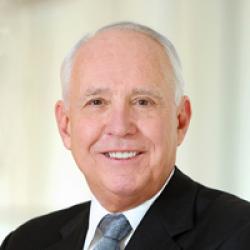Change is a constant in life, both personally and professionally. Sometimes, though, changes feel so disruptive that we may fundamentally question who we are and where we are heading. Today, as we face great uncertainty created by tumultuous change in health care and society at large, a set of core beliefs can help us remain true to our values and missions even as we are buffeted by conflicting forces. In academic medicine, we have a set of enduring truths that have been a guiding force since the establishment of the AAMC nearly 150 years ago. Arguably, some beliefs have existed from the time of Hippocrates.
For my last column as AAMC president and CEO, I want to highlight some of the universal professional touchstones I gleaned from having had the remarkable privilege of visiting students and faculty at every AAMC-member school. Regardless of the size of your institution, your area of specialization, or your location, these enduring truths can buoy us, providing guidance during troubling or disruptive times. They remind us of what drew us to academic medicine in the first place.
- We stand by an abiding commitment to prepare the next generation of physicians to improve the health of all and serve the medical needs of this nation. At every medical school I visited, I observed the energy of faculty fueled by their engagement with learners. In that same spirit, I felt the hope and optimism of students who want to serve and make a difference. While the curricula and educational techniques used to train students are rapidly evolving with new technology and innovative pedagogical techniques, the dedication of faculty to support learners’ personal development as physicians and scientists remains constant. It has been especially gratifying to see our medical schools and teaching hospitals committed to combating burnout and fostering a culture of well-being where no clinician, scientist, or learner is left behind.
- The truth and power of science will move us forward. Academic medicine thrives on the excitement of unraveling the secrets of biological systems and innovation powered by that discovery. We have learned how to work together in new ways to accelerate progress. Team-based science has enabled us to find more effective solutions to improve medical care at a faster pace than the traditional “independent investigator model.” The possibilities of the future are bright due to our drive to discover and our persistence to seek better solutions.
- Our ethical compass continues to show us “true north.” As physicians, our most basic ethical commitment is to the beneficence of healing while respecting the autonomy of our patients and the prime directive to do no harm. Above all, while we may develop new payment models, create multitiered hospital systems, and achieve phenomenal advances in treatment, the imperative to strive for social justice in the form of health equity is steadfast from the day we first don our white coats. These shared core principles of clinical ethics will continue to unite us as a profession.
- Supporting diversity and inclusion remains central to achieving health equity. Our commitment to diversity not only applies to the makeup of our medical school classes or to the faculty and staff at our institutions; it also is imperative if we are to address disparities in patient care and inequities in research investigations. We struggle mightily with issues of race, ethnicity, sexual orientation, and gender as a nation and throughout the world, but every day, the work of our academic medical centers demonstrates how people from every background can come together in the spirit of inclusion. While we have far to go in eliminating health disparities, gender inequities, and harassment, we have made significant strides in achieving a more holistic review of our medical school applicants and integrating cultural competency into the fabric of medical education.
- We have a responsibility to engage actively with the local communities we serve. Our societal responsibility extends beyond the health of individuals to the well-being of the entire community. Medical schools and teaching hospitals are important stakeholders in advancing not only public health, but also socioeconomic stability. Investing in the community is as vital as engaging with the people we treat as patients. Both activities allow us to better understand the culture in which our care is provided and how to improve that care.
- We must leverage our credibility and experience in health care to steer public policy for the public good. Academic medicine plays an essential role in the well-being of our nation and our world. Yet in a rapidly changing health care environment, we must continually educate policymakers and the public about the unique missions of academic medicine and the value of those missions to our health care system. As a profession that is widely respected, we must be models of conscience, leadership, and compassion, consistently speaking out and sharing facts about the issues being debated that affect health and the patients we serve.
- The AAMC will continue to be a powerful voice in advancing medical education and advocating for academic medicine. Since 1876, the AAMC has provided a professional home for America’s medical schools, teaching hospitals, academic societies, faculty, and learners. Together, we have worked to strengthen medical education, patient care, and medical discovery. Through our partnership, the AAMC has become an authoritative force and vigorous advocate in improving the health of all. I firmly believe that these truths we stand for at the AAMC will be passed on and shared by the coming generations of academic medicine’s leaders.
A final “enduring truth” is my deep gratitude for the honor and privilege of leading the AAMC for 13 years. The experience of being AAMC president and CEO has been the high point of my professional life. I know my heart and my mind will remain deeply connected to the AAMC and academic medicine for years to come. So this is not “goodbye,” but simply, until we have the pleasure of meeting again.

